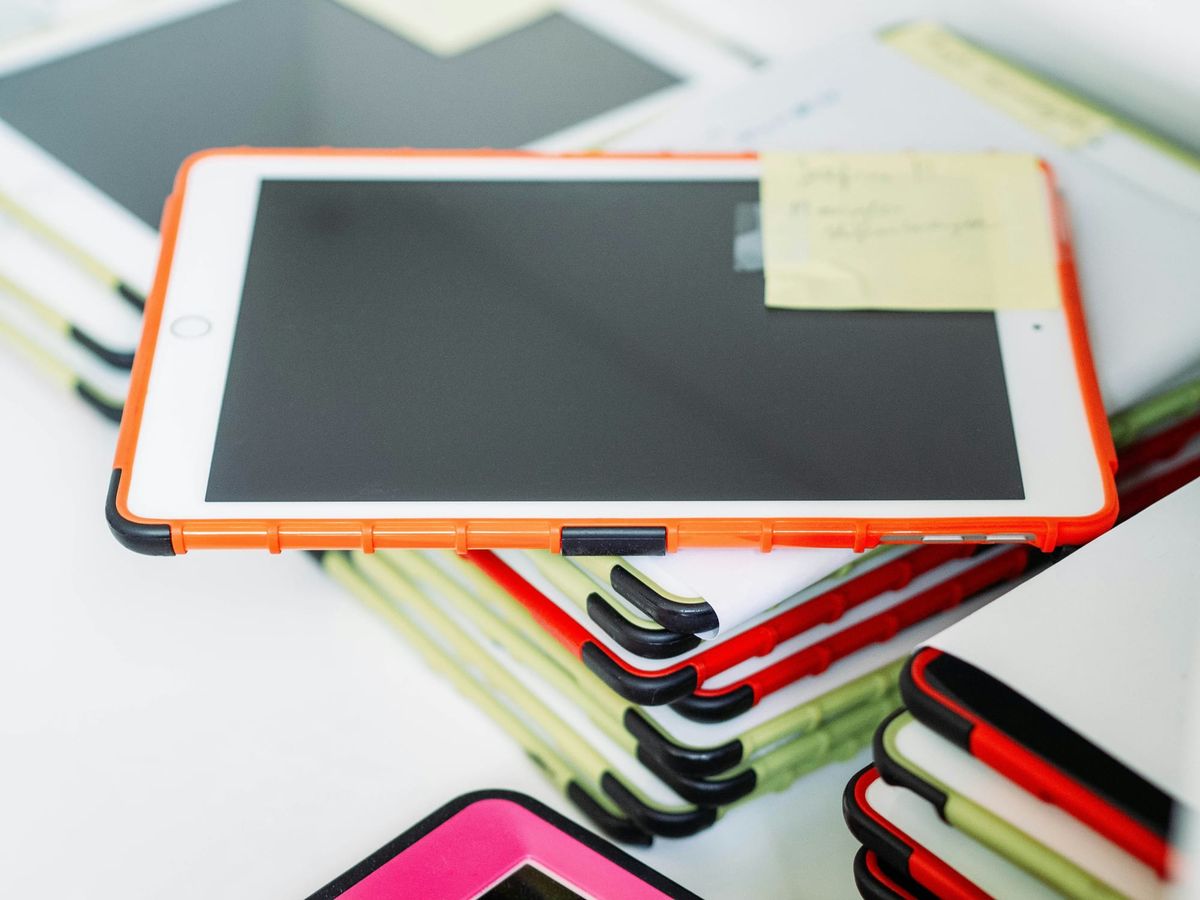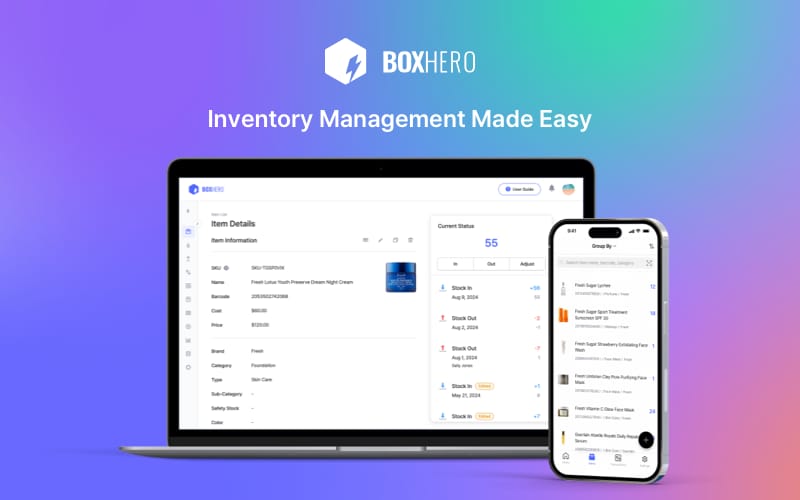Schools, Labs, and Classrooms: Creating an Inventory System for Educational Institutions

Ever spent hours searching for that one science kit you were sure was in the storage room? Or discovered you're out of essential supplies right before a big class project? If you're nodding along, you're not alone. From elementary school teachers to university lab managers, keeping track of educational materials can feel like a full-time job on top of your real full-time job.
But here's the good news: managing your educational inventory doesn't have to be complicated or time-consuming. Whether you're responsible for a single classroom or an entire department's equipment, the right inventory system can transform those frustrating "Where is it?" moments into smooth, organized operations.
In this guide, we'll show you exactly how to set up and maintain an inventory system that works for your educational setting. You'll learn:
- Different types of educational inventory
- Types of inventory systems—manual vs. software-based
- Benefits of an effective inventory system
- How BoxHero can enhance your inventory management practices
- How to set up an inventory management system
Types of Inventory in Educational Institutions
Every educational space has its own unique inventory requirements. What works for a first-grade classroom might not suit a university chemistry lab. Understanding exactly what you need to track is your first step toward getting organized.

Classroom Supplies: The Everyday Essentials
Your classroom inventory typically includes materials you use daily. These might be basic supplies like markers and paper, or specialized items for art, music, or other subjects. The key is knowing not just what you have, but when you'll need to restock.
Common classroom items to track:
- Teaching materials (textbooks, workbooks, demonstration tools)
- Student supplies (notebooks, binders, pens & pencils)
- Reusable items (scissors, rulers, calculators)
- Special project materials
Laboratory Equipment: Precision and Care
Lab environments require extra attention to detail in inventory management. Not only are many items expensive to replace, but they often need regular maintenance and calibration.
Key laboratory considerations:
- Measuring instruments — scales, meters, and thermometers
- Scientific tools — microscopes, centrifuges, and spectrometers
- Safety gear — goggles, lab coats, and gloves
- Consumables — chemicals, test tubes, and pipettes
- Calibration equipment — for ensuring accuracy and safety of scientific instruments
Dr. Meshack Odenyo, Senior Technical Advisor of Regulatory Systems, emphasized these practices by stating:
"In my experience working in the pharma manufacturing industry laboratory resources are mainly based in accordance with Good Laboratory Practices (GLP), it’s essential to establish and adhere to rigorous quality standards. This involves proper documentation, training, and maintaining a controlled environment. Ensure equipment calibration, follow standard operating procedures (SOPs), and regularly audit practices to uphold compliance."
Technology Assets: Digital Tools and Resources
Today's educational spaces often include significant technology investments. Keeping track of these assets is critical for both maintenance and budgeting.

Some technology items:
- Computing devices — desktop computers, laptops, and tablets
- Interactive tools — smartboards and projectors
- Audiovisual equipment — cameras, microphones, and speakers
- Software licenses — educational programs and digital textbooks
- Maintenance tools — hardware repair kits and diagnostic software
Shared Resources: Beyond Your Space
Many educational institutions also need to track resources that move between different spaces or are shared among multiple individuals:
- Mobile carts — for transporting laptops or projectors between rooms
- Sports equipment — balls, nets, and uniforms
- Musical instruments — pianos and violins
- Specialized gear — physical prototypes like lab models and engineering kits
Types of Inventory Systems: Manual vs. Software-Based Solutions
Choosing the right type of inventory system is vital for effective management. There are options ranging from traditional manual methods to advanced software-based solutions, each with its own benefits and drawbacks.
Selecting the right type of inventory system depends on the institution’s size, budget, and complexity of inventory needs. Here’s a look at the main types available and what they offer:
1. Manual Inventory System
A manual inventory system typically involves pen and paper or simple lists that are maintained by staff. This approach is often familiar and straightforward but has limitations, especially for larger institutions with complex needs.

Pros:
- Easy to set up with minimal upfront costs.
- No technical knowledge required; accessible to all staff.
- Works well for small-scale inventories with low turnover.
Cons:
- Time-consuming.
- Prone to human error, leading to inaccurate records.
- Difficult to update in real-time, making it challenging to keep track of rapidly used or shared resources.
- Lack of integration with other systems, such as budgeting or school management software, limits scalability.
2. Spreadsheet-based System
Some institutions use spreadsheets as a middle ground between manual tracking and specialized software. While spreadsheets allow for better organization and tracking, they still require some level of manual data entry and maintenance.
Pros:
- Low-cost and widely available; no need for specialized software.
- Allows for basic organization, sorting, and filtering of data.
- Slightly easier to update and share compared to paper-based records.
Cons:
- Still prone to errors, especially as data volume increases.
- Limited automation capabilities, requiring frequent manual updates.
- Can be difficult to use for real-time tracking, as it requires regular updating by all users.
3. Software-Based Inventory Systems with Cloud and Mobile Access
Software-based inventory systems provide rich features for efficient inventory management. These systems range from simple applications to comprehensive solutions that can be cloud-based, offering extensive functionalities across multiple devices.

Key Features:
- Real-Time Asset Tracking: Keeps track of all educational assets like textbooks, computers, and lab equipment in real-time.
- Low-Stock Alerts: Sends notifications when stock levels are low to ensure timely reordering.
- Integration with Existing Systems: Seamlessly integrates with other institutional softwares such as HR, finance, and student information systems.
- Loss & Theft Prevention: Features to prevent loss and theft, such as barcoding and tagging, should be included.
- Customizable Reports: Allows the creation of tailored reports to meet the specific needs of the institution.
- User-Friendly Interface: Provides an intuitive and easy-to-use interface for all users.
- Security: Includes strong security measures to protect sensitive data.
Pros:
- Provides immediate updates for accurate, up-to-date access to inventory levels.
- Integrates barcode or RFID technologies, automating counts and simplifying check-in/check-out processes to reduce errors.
- Supports multiple users with varied permissions, ideal for larger institutions with several departments.
- Cloud-based features enable staff to manage inventory from anywhere, ideal for schools with multiple campuses or remote learning settings.
Cons:
- Higher initial costs
- Staff may require training to learn the software effectively
- Cloud-based systems often involve recurring subscription fees and data storage costs.
- Reliance on internet connectivity means that access and functionality can be limited in areas without stable internet service.
Benefits of an Effective Inventory System
Setting up a robust inventory system in educational settings offers benefits that go beyond basic organization. Here are some:
▶︎ Cost Savings and Resource Optimization
You can avoid unnecessary purchases and reduce waste by having a clear overview of which items are available and when they need to be replenished. This saves money and ensures that resources are used more efficiently. Plus, accurate tracking allows you to take advantage of bulk purchasing for regularly used supplies.
▶︎ Enhanced Teaching and Learning Experiences
Having the right materials helps instructors run their classes more smoothly, reducing disruptions and creating a better teaching and learning experience for both students and teachers.

▶︎ Improved Accountability and Reduced Loss
A well-organized inventory system makes it easy to keep track of where items are and how they’re used. This reduces the chances of losing things or having them stolen. It’s especially important in places where lots of people share and use the same resources, like in schools with many students and teachers.
▶︎ Data-Driven Decision Making
Inventory systems can give useful data for forecasting needs and planning budgets. By tracking resource usage, schools can make more informed decisions on where to allocate their funds.
BoxHero for Effective Inventory Management in Educational Institutions
If your organization is still tracking inventory manually (either on paper or on a spreadsheet), it's time to make the switch to a more efficient system. BoxHero's inventory management software offers a range of features that make it an ideal solution for managing inventory in educational settings.

Here are some key functionalities:
- Low Stock Alerts: Receive notifications when inventory levels drop below a specified threshold, ensuring that essential supplies like textbooks, lab materials, and classroom tools are always in stock.
- Barcode and QR Code Integration: Easily generate and print barcode or QR code labels for each item, simplifying check-in and check-out processes and reducing human error in tracking and updating inventory records.
- Mobile Inventory Counting: Conduct inventory counts directly from mobile devices, with multiple staff members participating in real-time. This is especially helpful for large institutions where inventory is spread across multiple locations, like classrooms, labs, and libraries.
- Customizable Attributes: Organize your inventory using custom attributes, such as categories for a broader organization (e.g., lab equipment, sports gear), and add other specific attributes like color, size, location, condition, or usage.
- User Roles and Permissions: Assign different user roles and permissions to staff members, ensuring that only authorized personnel can access or modify inventory data. It helps to maintain security and accountability within your organization.
Conclusion
Setting up an effective inventory system for your educational institution doesn't have to be complicated.
By understanding what you need and choosing the right approach—whether it’s manual tracking, spreadsheets, or software—you can save money and keep better track of your supplies.
Investing in a good inventory system like BoxHero helps create a more organized environment so that you can focus on what matters most: providing a great learning experience for your students.
Try BoxHero today and see for yourself how our education-focused inventory solution can help your institution.

Checklist: Setting Up an Inventory Management System for Your Organization
1. Identify Inventory Needs:
- Physical Assets:
- Classroom furniture (desks, chairs, tables)
- Laboratory equipment (microscopes, beakers, test tubes)
- Technology devices (computers, tablets, projectors)
- Sports equipment (balls, nets, uniforms)
- Library books and resources
- Consumable Supplies:
- Paper, pens, pencils
- Cleaning supplies
- Art supplies
- Science lab chemicals
- Digital Assets:
- Software licenses
- E-books and online resources
2. Choose an Inventory Management System (IMS):
- Consider the following factors:
- Ease of use: User-friendly interface for staff
- Customization: Ability to tailor the system to specific needs
- Scalability: Capacity to handle future growth
- Integration: Compatibility with other systems (e.g., accounting, HR)
- Security: Robust security features to protect sensitive data
- Cost: Budgetary constraints and licensing fees
- Popular IMS options:
- Commercial software (e.g., QuickBooks, SAP)
- Open-source software (e.g., OpenERP)
- Cloud-based solutions (e.g., BoxHero, Zoho Inventory)
- Spreadsheet-based systems (e.g., Excel)
3. Data Entry and Organization:
- Create a detailed inventory list:
- Item description
- Quantity
- Location
- Purchase date
- Warranty information
- Assign unique identifiers:
- Barcodes or QR codes for easy tracking
- Categorize items:
- By type, location, or department
- Set up a system for regular inventory counts:
- Physical counts to verify accuracy
- Cycle counting for high-value or frequently used items
4. Implement Inventory Tracking Procedures:
- Check-in/Check-out Process:
- Establish clear procedures for borrowing and returning items
- Use a system to record who has borrowed what and when
- Maintenance and Repair:
- Schedule regular maintenance for equipment
- Track repair costs and history
- Disposal and Retirement:
- Develop a policy for disposing of outdated or damaged items
- Properly document disposal procedures
5. Monitor and Analyze Inventory Data:
- Generate reports:
- Track inventory levels
- Identify usage patterns
- Monitor costs
- Utilize data for informed decision-making:
- Identify cost-saving opportunities
- Improve resource allocation
6. Train Staff:
- Provide training on:
- Using the IMS
- Inventory procedures
- Data entry and accuracy
- Reporting and analysis
7. Regularly Review and Update the System:
- Adapt the system to changing needs:
- Add or remove items as necessary
- Update item information
- Modify procedures as required
- Conduct regular system audits:
- Ensure data accuracy and security
- Identify areas for improvement
Note: This checklist serves as a starting point to guide you through the process of setting up an inventory management system for your educational institution. Feel free to tweak and adjust it based on your specific needs and circumstances to ensure it works best for your environment.



